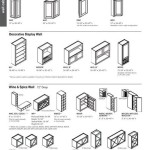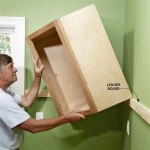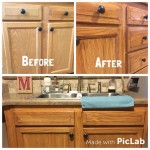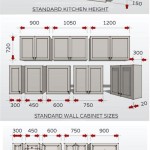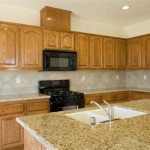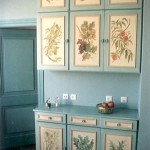Can I Paint Over Wooden Cabinets? A Comprehensive Guide
Many homeowners contemplating kitchen or bathroom renovations often consider painting their existing wooden cabinets as a cost-effective alternative to full replacement. While painting wooden cabinets is indeed a viable option, its success hinges on proper preparation, the right materials, and a meticulous approach. This article provides a comprehensive guide to help determine if painting your wooden cabinets is feasible and outlines the steps necessary for achieving a professional-looking finish.
The decision to paint wooden cabinets should begin with a thorough assessment of their current condition. Factors such as the type of wood, the existing finish, any damage or wear, and the overall style of the cabinets must be considered. A careful evaluation will help determine the necessary preparation steps and the suitability of painting as a solution.
Assessing Cabinet Condition and Suitability for Painting
Before embarking on a painting project, it is crucial to thoroughly inspect the wooden cabinets. Look for signs of damage such as warping, water damage, deep scratches, or significant wear and tear. Cabinets with extensive damage may require repairs that outweigh the cost and effort involved in painting. Warped or severely damaged cabinets might be better candidates for replacement, as paint will not rectify structural issues.
The existing finish also plays a significant role. Cabinets with a heavily lacquered or varnished finish will require more extensive preparation than those with a lighter, more porous finish. Consider whether the existing finish is adhering well or if it is peeling or chipping. A loose or unstable existing finish must be completely removed before painting.
The style of the cabinets should also be considered. While paint can refresh the look of dated cabinets, it cannot fundamentally alter their design. If the cabinets are severely outdated or do not align with the desired aesthetic, replacement might be a more suitable option. However, if the cabinet style is generally acceptable, painting can provide a significant visual upgrade.
Finally, consider the type of wood used in the cabinets' construction. Open-grained woods like oak and ash will have a more pronounced texture even after painting. While some homeowners appreciate this natural texture, others may prefer a smoother finish. Filling the grain before painting is an option, but it adds an extra step and requires more time and effort.
Essential Preparations for Painting Wooden Cabinets
Proper preparation is paramount to achieving a durable and aesthetically pleasing paint finish on wooden cabinets. This process involves several key steps, each contributing to the overall success of the project. Neglecting any of these steps can result in a subpar finish that is prone to chipping, peeling, or poor adhesion.
The first step is removing all hardware, including knobs, pulls, hinges, and any decorative elements. This allows for complete access to the cabinet surfaces and prevents paint from getting on the hardware. Store the hardware in a safe place and label it clearly to ensure easy reinstallation later.
Next, thoroughly clean the cabinets to remove any dirt, grease, grime, or other contaminants. Use a degreasing cleaner specifically designed for kitchen cabinets. Avoid harsh chemicals that could damage the wood. Rinse the cabinets with clean water and allow them to dry completely before proceeding.
Sanding is a critical step in preparing wooden cabinets for painting. Sanding roughens the surface, creating a better bond for the primer and paint. Use medium-grit sandpaper (around 120-grit) to sand the entire surface of the cabinets. Pay close attention to edges and corners. After sanding, wipe down the cabinets with a tack cloth to remove any sanding dust.
Priming is essential for achieving a smooth, uniform finish and ensuring proper paint adhesion. Use a high-quality primer designed for wood. Apply the primer in thin, even coats, following the manufacturer's instructions. Allow the primer to dry completely before proceeding to the next step. For cabinets with a heavily lacquered or varnished finish, or cabinets made of open-grained wood, consider using a specialized bonding primer or a grain filler before priming, respectively.
Caulking any gaps or cracks around the cabinet frames and doors is another important step. Use a paintable caulk to fill these imperfections, creating a seamless and professional-looking finish. Smooth the caulk with a wet finger and allow it to dry completely before painting.
Finally, consider creating a dedicated workspace for painting. Cover the surrounding area with drop cloths to protect against paint splatters. Ensure adequate ventilation to prevent the buildup of fumes. Setting up a well-organized workspace will make the painting process more efficient and enjoyable.
Selecting the Right Paint and Application Techniques
Choosing the right paint is crucial for achieving a durable and aesthetically pleasing finish on wooden cabinets. Several types of paint are suitable for painting wooden cabinets, each with its own advantages and disadvantages. Consider factors such as durability, ease of application, drying time, and desired sheen when making your selection.
Acrylic latex paint is a popular choice for painting wooden cabinets due to its durability, ease of application, and low odor. It is also water-based, making it easy to clean up. Look for a high-quality acrylic latex paint specifically designed for kitchen and bathroom cabinets. These paints are typically formulated to resist stains, moisture, and wear and tear.
Oil-based paint is another option, known for its durability and smooth, glossy finish. However, oil-based paints have a strong odor, require longer drying times, and necessitate mineral spirits for cleanup. They also tend to yellow over time, especially in areas with limited sunlight exposure. Due to environmental and health concerns, oil-based paints are becoming less common.
Alkyd enamel paint offers a good compromise between acrylic latex and oil-based paints. It provides a durable, smooth finish with good moisture resistance and is easier to clean up than oil-based paint. Alkyd enamel paints are also less prone to yellowing than oil-based paints.
Once you have chosen the right paint, proper application techniques are essential for achieving a professional-looking finish. Apply the paint in thin, even coats, using a high-quality brush or roller. Avoid applying too much paint at once, as this can lead to drips and runs. Allow each coat to dry completely before applying the next one.
For larger, flat surfaces, a paint sprayer can provide a smooth, even finish. However, using a paint sprayer requires practice and skill. It is also important to properly mask off the surrounding area to prevent overspray. If you are not comfortable using a paint sprayer, a high-quality brush or roller will suffice.
Consider sanding lightly between coats of paint to remove any imperfections and create a smoother surface. Use fine-grit sandpaper (around 220-grit) and wipe down the cabinets with a tack cloth after sanding. Apply multiple thin coats of paint rather than one thick coat. This will result in a more durable and aesthetically pleasing finish.
Finally, allow the paint to cure completely before reinstalling the hardware and using the cabinets. Curing time can vary depending on the type of paint and the environmental conditions. Refer to the manufacturer's instructions for specific curing recommendations. Rushing this process can result in damage to the painted surface.
By carefully assessing the cabinet's condition, preparing the surfaces thoroughly, and using the right paint and application techniques, homeowners can successfully paint their wooden cabinets and achieve a refreshed and updated look without the expense of replacing them. This project, while time-consuming, offers a significant return on investment in terms of both aesthetics and value.

Exactly How To Paint Oak Cabinets Written By A Pro Painted Kayla Payne

How To Paint Laminate Cabinets Without Sanding The Palette Muse

Cabinet Refinishing Guide

Should I Paint My Kitchen Cabinets

How To Paint Grainy Oak Cabinets And Get A Smooth Finish

Diy Kitchen Cabinet Painting The Easy Way

Can I Paint Over Stained Wood Williams Painting

Paint Cabinets White For Less Than 120 Diy

How To Paint Kitchen Cabinets From A Diyer Who Has Done It 3 Times

How To Paint Veneer Cabinets For A Long Lasting Finish Anika S Diy Life
Related Posts


